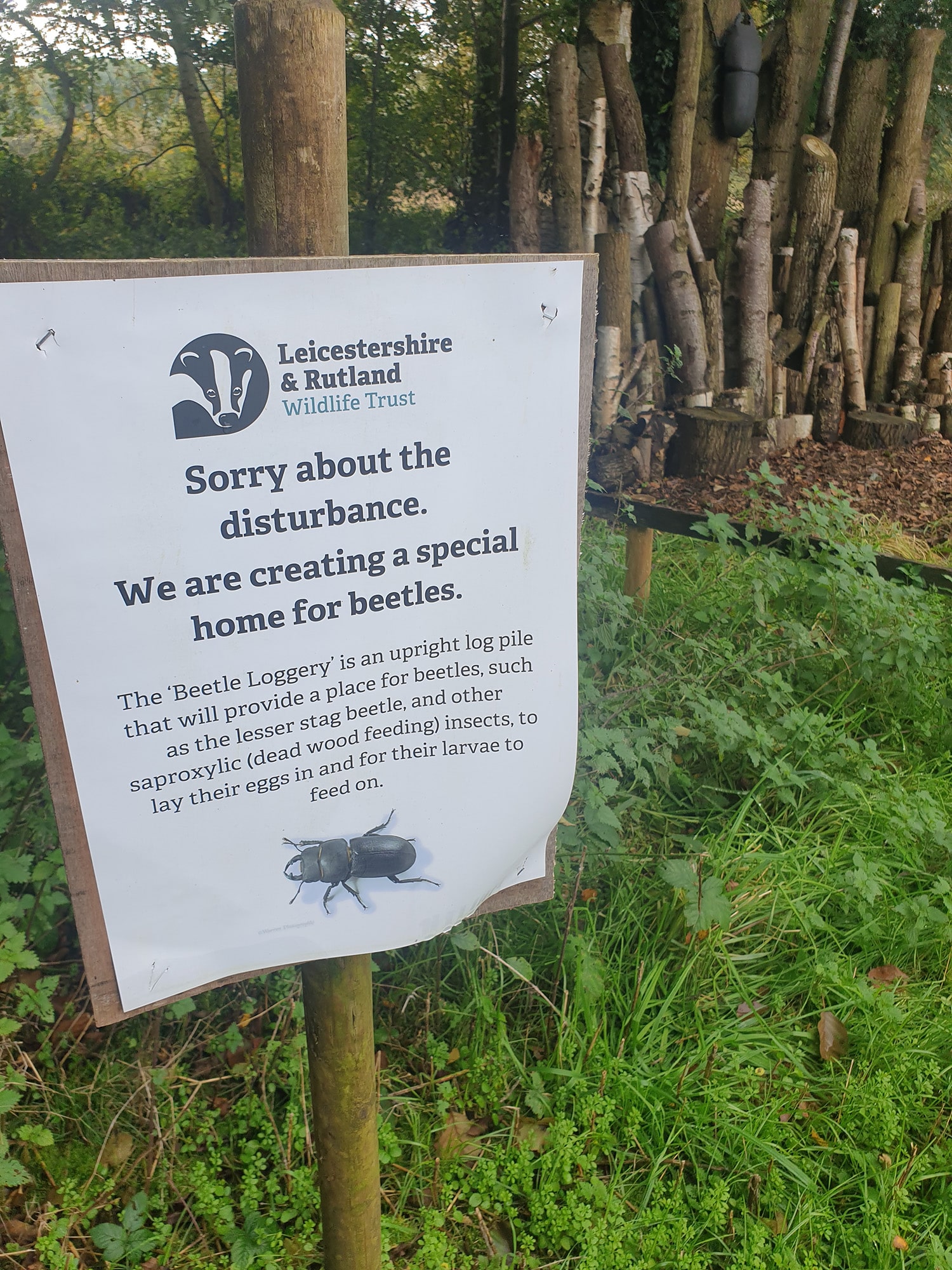BEETLE LOGGERY at RUTLAND WATER
Upright log piles can provide a habitat for many species of deadwood feeding (Saproxylic) invertebrates in public areas of woodlands, parks and Nature Reserves, in places where standing deadwood cannot be left due to safety reasons. Standing deadwood is considered to be the rarest deadwood habitat in the UK and is incredibly valuable for a host of different invertebrate species, not least of all stag beetles. While we do not get the large Stag Beetle (Lucanus cervus) in Leicestershire and Rutland, there are two smaller species found here which have the same requirements for their larvae: Lesser Stag Beetle (larvae feed on rotting timber, especially Ash, Beech and Apple); and Rhinoceros Beetle (larvae feed on rotting timber, favouring Beech, but also Ash, Apple, Willow and Lime).
The Beetle Loggery at Rutland Water Nature Reserve was designed to create an interesting and artistic feature that is not only functional, but which can also inspire visitors to create smaller structures in their own gardens to benefit saproxylic invertebrates.
The project made use of timber which was a by-product of our normal woodland management – and includes oak, cherry, ash, alder and birch (we avoided willow as even timber which was felled a couple of years ago would have potentially re-grown). We hired a mini-digger and created a pit 4m x 2m in a suitable area of wet woodland, adjacent to one of the main paths through the Reserve. The logs, which varied in height and width, were then sunk into the ground to a depth of approximately 1m to create sub-terranean dead wood along with standing dead wood (up to 2m high). Historically we had used logs from our woodland management to make log piles (laid on the ground), but the benefit of the upright loggery design is that it decays at a much slower rate than if they were laid on the ground.
Although it was installed less than a year ago, we have already recorded two species of jewel beetle and a rarely seen fungus beetle called the false ladybird (Endomychus coccineus) – which was probably attracted to the 20 species of fungi we have so far recorded on the structure.
For further information, please contact Tim Sexton, Senior Species and Recording Officer (LRWT) at tsexton@lrwt.org.uk




